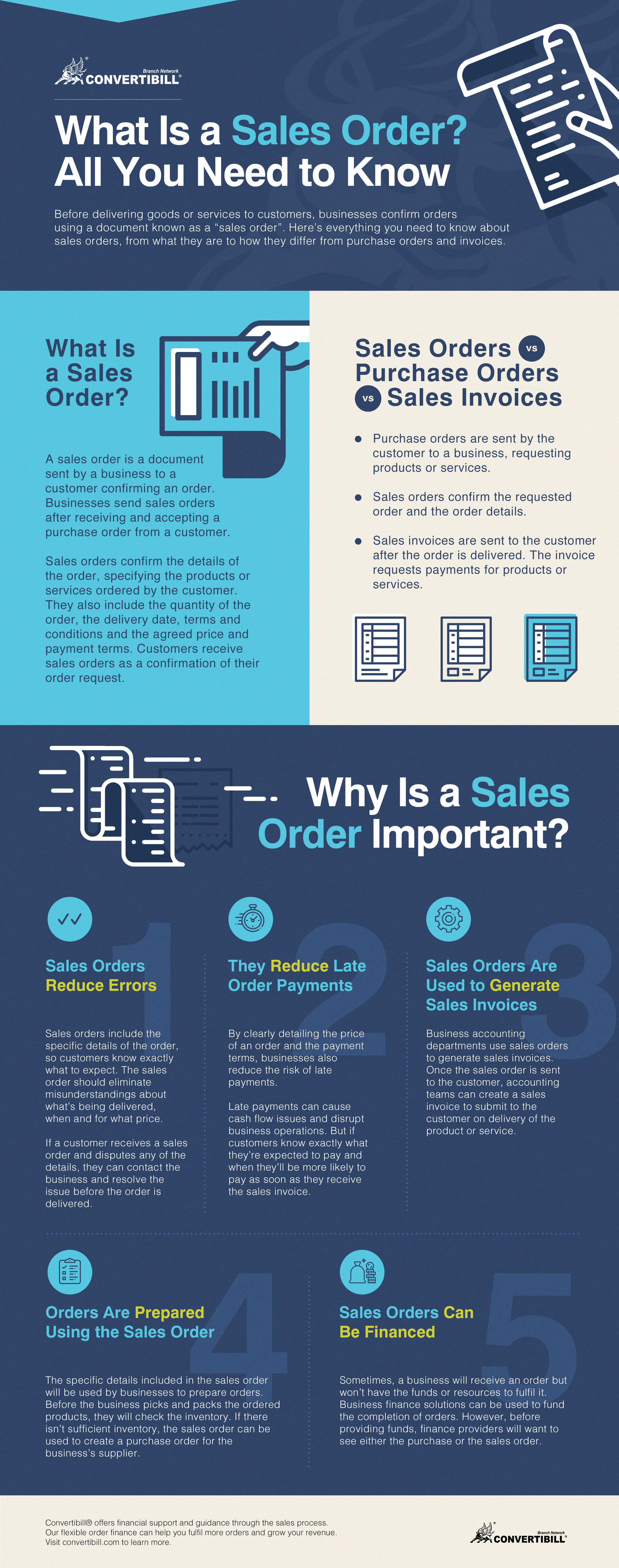
Before completing orders and delivering goods or services to customers, businesses confirm orders using a document known as a “sales order”. But if you haven’t sent or received a sales order before, you might be wondering what it is and how it differs from an invoice or purchase order. Here’s everything you need to know about sales orders.
What Is a Sales Order?
A sales order is a confirmation document that is sent by a business to a customer. The sales order is sent after the business has received and accepted a purchase order from a customer.
It confirms the details of the order, specifying the products or services ordered by the customer, the quantity of the order, the delivery date, terms and conditions and the agreed price and payment terms. Customers receive sales orders as a confirmation of their order request.
Why Are Sales Orders Important?
Sales orders are important documents for both business and customer. Here’s why they’re such valuable documents.
Sales Orders Reduce Errors
Sales orders are used by businesses to confirm that they’ve accepted a customer’s purchase order. The document includes specific details of the order so that the customer knows exactly what to expect. The sales order should eliminate misunderstandings about what’s being delivered, when and for what price.
If a customer receives a sales order and disputes any of the details, they can contact the business and resolve the issue before the order is delivered.
They Reduce Late Order Payments
By clearly detailing the price of an order and the payment terms, businesses also reduce the risk of late payments. Late payments can cause cash flow issues and disrupt business operations. But if customers know exactly what they’re expected to pay and when they’ll be more likely to pay for the order as soon as they receive the sales invoice.
Sales Orders Are Used to Generate Sales Invoices
Business accounting departments will use sales orders to generate sales invoices. Once the sales order has been sent to the customer, accounting teams can create a sales invoice to send to the customer on delivery of the product or service.
Orders Are Prepared Using the Sales Order
The specific details included in the sales order will be used by businesses to prepare orders. Before the business picks and packs the ordered products, they will check the inventory. If there isn’t sufficient inventory, the sales order can be used to create a purchase order for the business’s supplier.
Sales Orders Can Be Financed
Sometimes, a business will receive an order but won’t have the funds or resources to fulfil it. Business finance solutions like Convertibill’s Order Finance can be used to fund the completion of orders. However, before providing funds, finance providers will want to see either the purchase order or the sales order.
What’s the Difference between a Sales Order, a Purchase Order and a Sales Invoice?
Sales orders are often confused with purchase orders and sales invoices, but these three documents all serve different purposes and are sent at different points in an order’s journey.
A purchase order is sent by the customer to the business, requesting products or services. Purchase orders include similar details to sales orders, such as the type, price and quantity of the product or service. Sales orders differ in that they are sent from the business to the customer, confirming the requested order.
Sales invoices are sent by the business to the customer after the order has been delivered. The invoice specifies and requests payment for the order.
Convertibill® offers financial support and guidance through the sales process. Our flexible order finance can help you fulfil more orders and grow your revenue. Contact us today to learn more.


